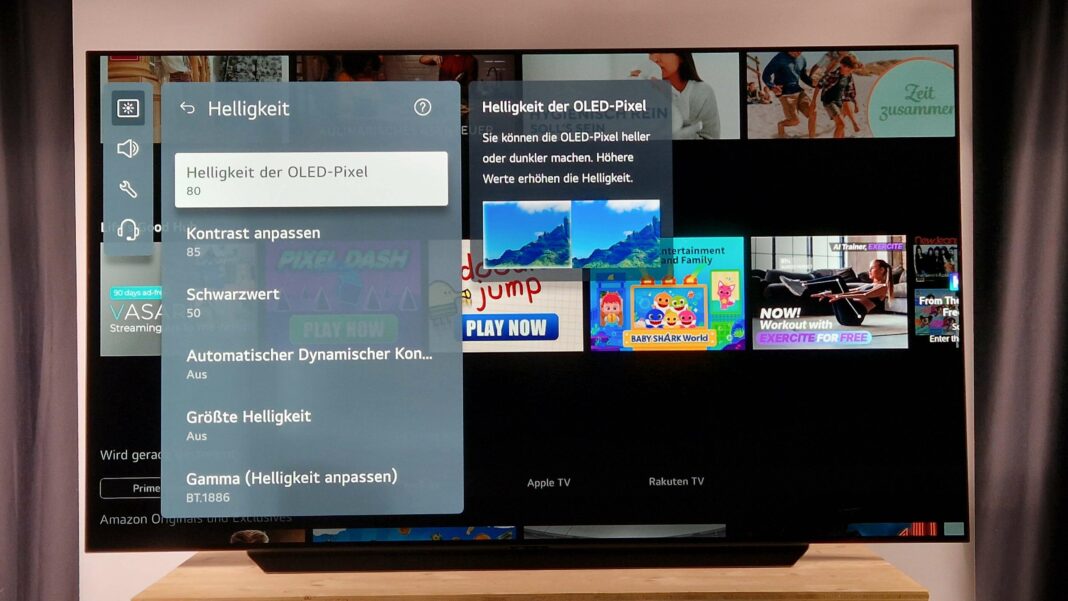In 2023, the EU tightened energy labeling regulations for TVs, pushing many high-end models to class F ratings. As manufacturers prioritize brightness for enhanced picture quality, power consumption rises. Some use preset modes for energy efficiency, often sacrificing display quality. Testing showed that while some models, like the LG C4, require adjustments to optimize performance, others, like the Panasonic 65Z95AEG, maintain high brightness even in factory settings. The focus remains on balancing energy savings with visual excellence.
Understanding the New EU Energy Label Requirements for TVs
In 2021, the European Union implemented new energy label standards that have notably affected the ratings of televisions, resulting in many high-end models now receiving class F ratings or below. As of 2023, these regulations have become even stricter, effectively banning the sale of particularly energy-inefficient models.
Balancing Brightness and Energy Efficiency
As customer expectations for picture quality continue to rise, televisions are evolving with larger and brighter screens, especially in HDR mode. However, increased brightness directly correlates with higher power consumption; the brighter the screen, the more energy it requires.
While manufacturers have the option to enhance panel efficiency, they often choose to focus their investments on achieving even greater brightness, resulting in dynamic and visually appealing images. Unfortunately, this pursuit of brightness limits the potential for significant reductions in power consumption.
To comply with the energy label standards, some manufacturers utilize a workaround by setting the TV to a preset mode that is far below its maximum capabilities, optimizing for energy efficiency. While this approach may help with energy assessments, it often comes at the cost of significant picture quality. Our testing at the CHIP test center underscores this concern.
For instance, when evaluating the LG C4 model with an 83-inch screen, priced around €4,000, we found that it operates in an ‘Automatic Energy Saving’ mode, consuming only 90 watts while playing HDR content. However, this mode severely limits brightness, achieving only 233 cd/m² at peak highlights—far below the minimum required for proper HDR viewing, which typically demands at least 1000 cd/m². Even switching to ‘Cinema’ mode does not rectify the issue, as the brightness remains inadequate for an immersive viewing experience in a dark environment.
To unlock the television’s full potential, viewers must navigate to the settings menu and deactivate the light sensor. This adjustment allows the LG C4 to reach an impressive 960 cd/m², showcasing its true capabilities. We recommend this approach, as it ensures that consumers receive the high-quality visuals they expect from a premium television.
In contrast, our investigation of the 65-inch Panasonic 65Z95AEG revealed a more favorable outcome. In its factory settings, this model achieved a brightness of 1100 cd/m², which is sufficient for outstanding HDR performance. When the light sensor is disabled, it can reach over 1600 cd/m² for peak highlights, with an increase in average power consumption of only 3 watts, suggesting that consumers should also consider disabling the light sensor for this model.
We advocate for energy-saving features that genuinely enhance product performance without sacrificing quality. The current trend of providing televisions with suboptimal presets does not achieve this goal. Buyers either receive a television that fails to meet expectations based on its cost or are forced to disable these presets, negating any potential energy savings. Manufacturers should strive to clearly communicate the impact of energy-saving modes on brightness and energy efficiency, and establish a balanced preset that minimally affects picture quality while promoting energy conservation.
The Most Efficient Televisions from Our Tests
Here are some of the most efficient televisions based on our comprehensive testing of 58 models:
- Top Recommendation: Very Good (1.0) – VA-LCD (Mini LED) – 65 inches – 3840 x 2160 pixels – Brightness: 1921 cd/m² – Power Consumption: 85.5 watts
- Price Tip: Very Good (1.0) – VA-LCD (Mini LED) – 65 inches – 3840 x 2160 pixels – Brightness: 1145 cd/m² – Power Consumption: 82.2 watts
- Also Economical: Very Good (1.3) – OLED – 65 inches – 3840 x 2160 pixels – Brightness: 1305 cd/m² – Power Consumption: 99.6 watts
We continue to explore energy efficiency in televisions while ensuring that quality is not compromised. Stay informed about the latest developments and recommendations in the world of home entertainment.
